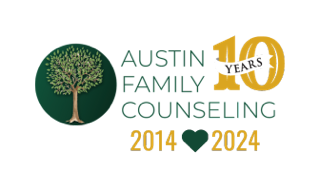Would you like a tool to help you understand yourself and others? I highly recommend the Myers-Briggs Type Indicator (MBTI). There are many personality assessments. Some are large and cumbersome, while others are oversimplified. The Myers-Briggs seems to hit a sweet spot. As psychologist Dr. Richard Grant puts it, the Myers-Briggs is “simple, memorable, portable, and applicable.”
Introduction
Based on theories by Swiss psychiatrist Carl Jung (1875-1961), the Myers-Briggs Type Indicator was developed by two American women, Katharine Briggs (1875-1968) and her daughter Isabel Briggs Myers (1897-1980). Although some academics dismissed their work because they did not have PhD’s, the two women persevered in their research. They were followed by Isabel’s son Peter B. Myers and many other researchers who continued their work. The Myers-Briggs Type Indicator now has over 70 years of solid research behind it. It has been shown to be reliable (consistent) and valid (meaningful). It has been translated into many languages, and is used throughout the world.
The Myers-Briggs is a way to appreciate an invisible form of human diversity: our personalities. The Myers-Briggs sorts humankind into 16 distinct personality types. People of the same personality type have striking similarities in outlook, even if they come from opposite sides of the world. Indeed, at some international conferences on the Myers-Briggs, participants are grouped with others of their personality type. Participants find it invigorating to meet others of their own personality type, from various nationalities and cultures.
The Myers-Briggs is 100% positive and favorable. All 16 personality types are good. In fact, all of the types benefit from one other. They are complementary. We are able to give feedback for each other’s blind spots. A classic book by Isabel Briggs Myers and Peter B. Myers is entitled “Gifts Differing,” from the Biblical verse “Having then gifts differing according to the grace that is given to us…” (Romans 12:6, KJV). One of the main things that we have learned from the COVID pandemic is that we need other human beings more than we previously realized. The Myers-Briggs gives us a way to look at our need for each other.
If we compare human beings to computers, we all have a dazzling array of “applications”—all the skills that we have learned. But under the surface, we appear to have 16 different “operating systems”—our innate way of viewing the world. If you can identify your “operating system,” and the “operating systems” of your loved ones, you have a powerful tool for understanding each other.
You are unique. There has never been anyone like you in the history of the world, nor will there ever be. But you have some characteristics that you share with some other human beings: for instance, your nationality, your gender, and your age. And you have some characteristics that you share with every other human being: for instance, you have a brain and a heart. Your Myers-Briggs personality type is in that middle category: you share your personality type with some other human beings, but not with all. Your Myers-Briggs personality type doesn’t label or stereotype you. It is simply a useful tool. There is infinite diversity within each of the 16 types.
The Myers-Briggs Preferences
The Myers-Briggs Type Indicator sorts people’s preferences according to four two-ended dimensions:
- Extraversion (E) or Introversion (I);
- Sensing (S) or Intuition (N—since the letter “I” has already been used);
- Thinking (T) or Feeling (F); and
- Judging (J) or Perceiving (P).
Developmentally, we become conscious through our preferences within each of these pairs. Determining your preference in each of the four pairs determines your personality type, which is designated by four letters. For example, I am an ISFJ, meaning that I prefer Introversion, Sensing, Feeling, and Judging. As you can see, the two choices for each of the four pairs yields 2 x 2 x 2 x 2 = 16 types.
Myths and Facts
Myth: My Myers-Briggs type has changed as I have matured.
Fact: Jung’s theory is that we are born with a “true type” that remains the same all our lives, even as we learn and grow. Your “true type” is worth learning, because it’s a fundamental part of who you are.
Myth: The Myers-Briggs is unreliable, because I got a different result on two different occasions that I took it.
Fact: No psychological assessment tool is perfect. Human beings are dazzlingly complex. Psychology is not an exact science like physics or math. The result that you get from the questionnaire, your “measured type,” may not be the same as your “true type.” Once you know your “measured type,” I recommend that you meet with a “Certified Practitioner of the MBTI” to determine your “true type.” Sometimes one letter, or even 2 letters, need to be adjusted. In my MBTI Certification class, there were 15 students. The instructor met with each of us individually to determine our “true type.” For 12 of us, our “true type” matched our “measured type.” For 2 students, one letter needed to be adjusted. For one student, 2 letters needed to be adjusted. For each of the 15 students, learning one’s “true type” was a wonderful “Aha!” moment, a moment of feeling understood, appreciated, and affirmed.
Myth: I can’t be classified, because I am equally good at both choices, in some or all of the pairs.
Fact: You may have developed strong skills on both sides of a pair. However, one side of the pair is more natural for you, and the other is more of a learned skill. When answering the questionnaire, if you are in doubt about how to answer a question, ask yourself which felt more natural to you as you were growing up—and which you may have learned later, because you needed to. An analogy is that one of my friends was born left-handed in the 1930’s. According to the custom of the time, she was taught to write with her right hand. However, all her life, for all skills other than writing, her left hand was more adept. The goal of the Myers-Briggs is to identify your natural, innate preferences.
Myth: My score on Extraversion is only slightly higher than my score on Introversion. That means that I’m only slightly Extraverted.
Fact: The Myers-Briggs is simply a sorting procedure. It does not indicate the degree or extent to which you have a characteristic. It sorts people as having a preference for Extraversion, or for Introversion, one or the other, not “how much.” The scores indicate how confident we are about the accuracy of the sorting procedure. If you score high on Extraversion, we can be fairly sure that you have a preference for Extraversion. If you score only slightly higher for Extraversion than for Introversion, we can’t be too sure about that preference. In that case, you especially need a “Certified Practitioner of the MBTI” to help you discover your “true type.”
Myth: Introverts are shy and don’t like being with people.
Fact: Introverts can be very friendly and outgoing. Introversion and Extraversion have nothing to do with whether you enjoy being with people. They have to do with how you “recharge your batteries.” When you are tired or stressed, does it re-energize you to be with other people? Or do you need some time by yourself to regain your energy? This is an example of how the words in the Myers-Briggs are used a little differently from the way they are used in everyday speech. Try to drop your preconceptions about the words, and learn their Myers-Briggs meaning.
Myth: Judging types are judgmental.
Fact: Having a Judging preference does not mean that you are judgmental; nor does having a Perceiving preference mean that you are perceptive. Here is another place where Myers-Briggs terms are different from the related, everyday words. Remember that everything in the Myers-Briggs is positive. The word “judging” is used in a positive way, as when you say that a person “has good judgment.” People with a Judging preference like to make decisions, make plans, and have things settled. People with a Perceiving preference like to be spontaneous, keep their options open, and respond fluidly to new situations.
Myth: Thinking types can’t feel, and Feeling types can’t think.
Fact: All humans think, and all humans feel. In the Myers-Briggs, having a Thinking preference means that you like to make decisions based on objective, logical analysis. Having a Feeling preference means that you like to make decisions based on people, values, and harmony. Both ways of making decisions are valuable.
How to Proceed
The most accurate way to find your personality type is to take the actual Myers-Briggs Type Indicator questionnaire, and then to fine-tune the result in collaboration with a “Certified Practitioner of the MBTI.” The real MBTI is available online at themyersbriggs.com, or in a self-scorable, printed version. The real MBTI (online or printed) can be completed in about half an hour. You can consult with a Certified Practitioner of the MBTI either online or in person. However, be cautious if you explore the Internet about the MBTI. As with many other topics, there is a lot of inaccurate information available.
Your goal, in collaboration with your Certified Practitioner, is to find your “true type.” Your practitioner can give you some written descriptions of your “measured type.” Please consider them as if you were trying on a pair of shoes. Let your practitioner know whether they fit or not. If they don’t fit, tell your practitioner where they rub. That will indicate what shoes to try on next. A good way to decide whether the descriptions fit is to highlight the phrases that fit you; put an X beside the phrases that are very different from you; and leave unmarked the phrases that are neutral. If there are a lot of X’s, you probably will want to try on another pair of “shoes.”
Once you know your “true type,” you and your practitioner can look at how your personality type interacts with those of the people close to you. This is a way of appreciating your unique gifts, and the gifts of those around you. I think that you will find this exploration helpful and affirming of you and your loved ones.
[I wish to thank Richard D. Grant, Jr., Ph.D., and Gerald P. Macdaid for teaching me the above material.]












